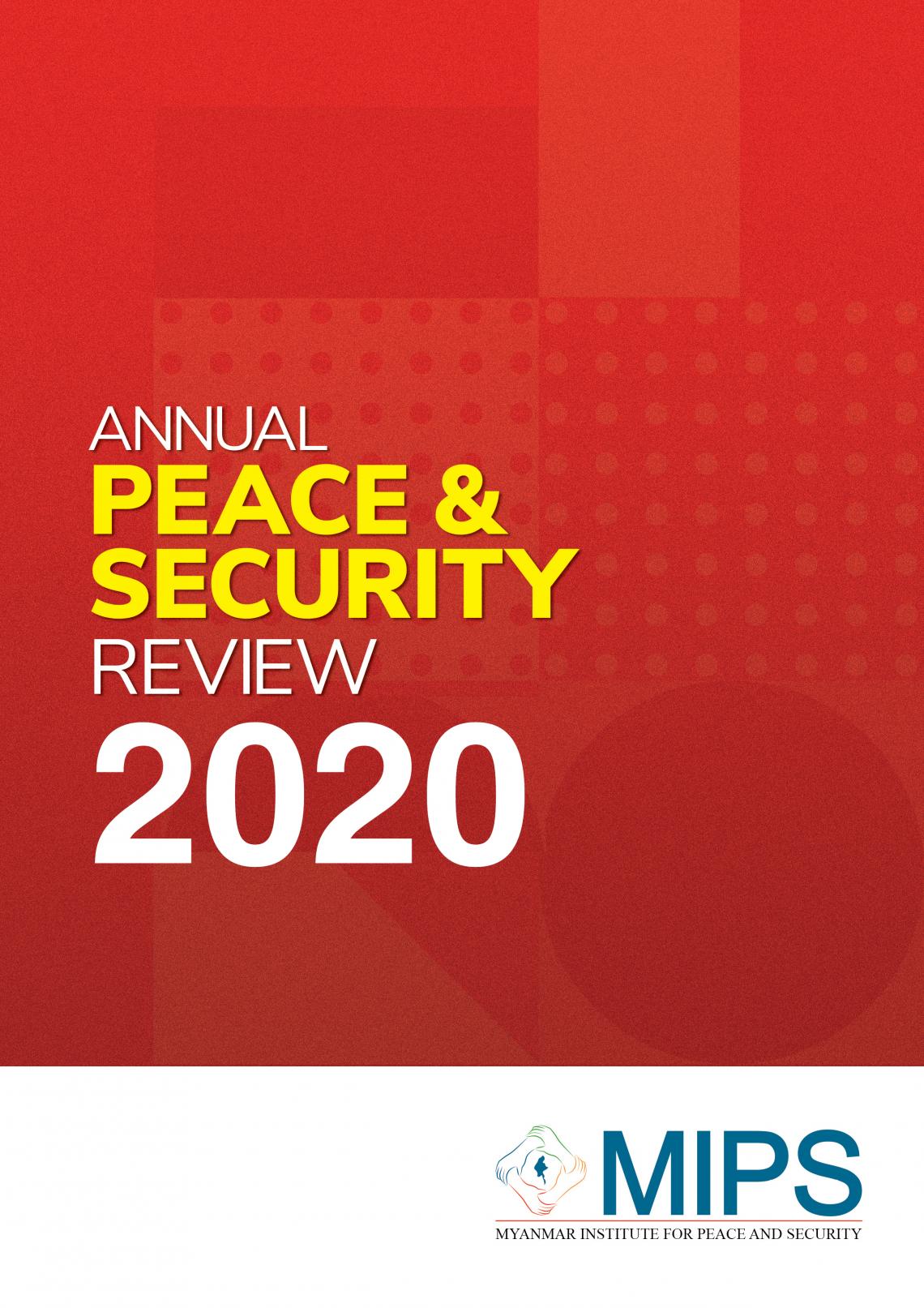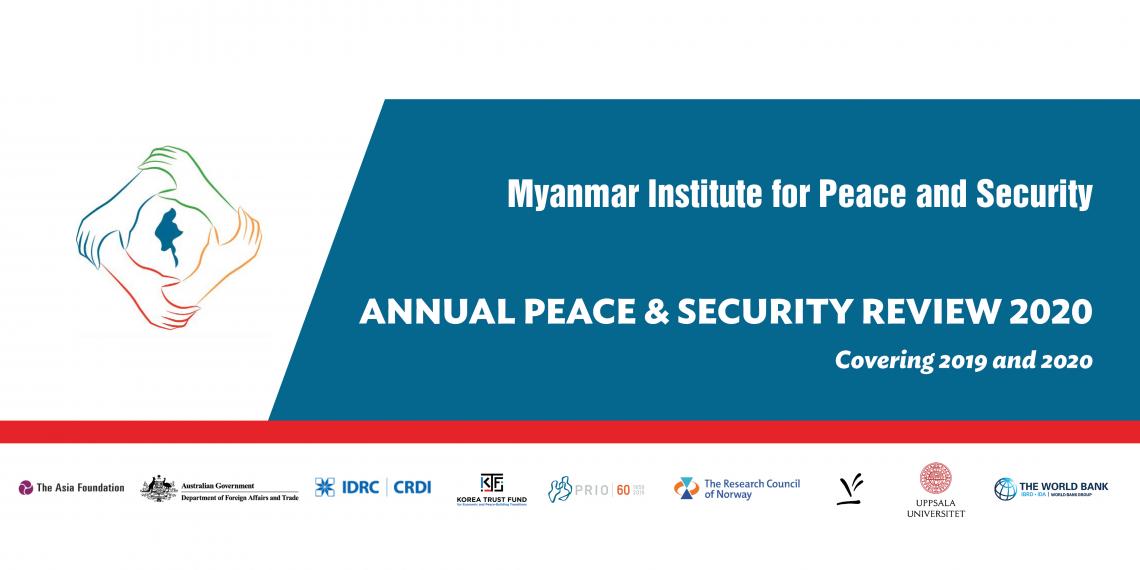COVID-19 has brought further uncertainty to one of the world’s longest ongoing conflicts. During 2019, some armed conflicts in Myanmar escalated while others stabilized, with the pandemic leading to a suspension of peace talks that is likely to extend till the end of 2020. The Annual Peace & Security Review 2020 tracks these complex dynamics and will be launched by the Myanmar Institute for Peace and Security (MIPS) during a webinar on July 7.
“This year’s review allows us to retrospectively compare the data between 2018 and 2019, and look into the development of the peace process in 2020. We also look into the impact on civilians and estimate combatant casualties. We were able to track the pattern of drug trafficking and seizure as well. Our approach is letting the data speak to explain the conflict,” says Dr. Min Zaw Oo, executive director of MIPS.
The 2020 review provides a comprehensive overview of the major peace and conflict trends in Myanmar over the course of 2019 and early 2020. It is based on a pioneering monitoring system managed by trained coders who track more than 300 variables, including 75 indicators of conflict dynamics. MIPS has also uniquely monitored social media use by armed actors to try to understand how they use it and if it changes individual perceptions towards the various conflicts in the country.
Two major conflicts dominated the landscape in Myanmar in 2019: one in the west and the other predominantly orchestrated by factions in the northeast.
In the far west in Rakhine and Chin states, major clashes occurred between the Arakan Army and the country’s armed military forces, the Tatmadaw. The Arakan Army largely succeeded in dismantling Rakhine’s civil administration, but the Tatmadaw managed to gain land and naval superiority in the region.
The Arakan Army was also involved, along with two major ethnic forces in the northeast, in a large-scale offensive in August on the 1,700 kilometer-long transportation route connecting Myanmar to southern China. Although the attacks disrupted the route for two weeks, the Tatmadaw soon gained the upper hand and pushed the fighters into the hills, with residual fighting continuing into early 2020. The north-eastern ethnic forces, formed of the Ta’ang National Liberation Army and the Myanmar National Democratic Alliance Army, together with the Arakan Army, eventually resumed talks with the government in early 2020. These are now suspended due to the ongoing pandemic.
Other parts of the country have been relatively more stable. Kachin State in the far north, for example, has seen relative stability despite minor clashes, due to a ceasefire agreement between the Tatmadaw and the Kachin Independence Army since June 2018. The two sides have been engaging in bilateral negotiations and cooperating to resettle internally displaced persons. This relative stability is expected to extend into 2021.
In the southeast, limited clashes also occurred in early 2019 between the Tatmadaw and the Karen National Liberation Army. A subsequent long pause in the fighting ended towards the end of 2019 when the Tatmadaw commenced work on a network of jungle roads in the state. The fighting continued into mid-2020.
Armed clashes in the country have led to 151 deaths and 384 injuries among civilians caught in the crossfire or affected by landmines and improvised explosive devices. Civilians have also been targeted for killings, arbitrary detention, abductions, extortion, and forced recruitment.
The peace process that was disrupted towards the end of 2018, due to differences between some of the signatories to the Nationwide Ceasefire Agreement, appeared set to restart when plans were released in January 2020 to recommence discussions between the agreement signatories. Ethnic organizations who have not signed the agreement had also begun expressing interest in improving their relationship with the government. But these and other talks have been suspended due to COVID-19 lockdowns. Political dialogue and bilateral ceasefire negotiations are not likely to progress throughout the remainder of 2020.
“The government needs to revise and provide more technical resources to its peace architecture to implement the peace process effectively,” says Min. “At the same time, ethnic armed groups need to find ways to resolve factional struggles internally to reduce spill-over effects on the peace process.”
Several funders contributed to this research and report, including the World Bank, the Asia Foundation, and the International Development Research Center (IDRC)’s Knowledge for Democracy Myanmar Initiative from Canada.
Event details
Date: 7 July 2020
Time: 6:30-7:45 pm Myanmar time
Journalists will be provided with a Zoom login. Please email Aya Kawanishi to confirm your interest. Email: [email protected]
Anyone else interested in the webinar can watch the event live on Facebook:
On MIPS Facebook page: https://www.facebook.com/mipsmm.org/
On DVB TV News Facebook page: https://www.facebook.com/DVBTVNews/
About MIPS
The Myanmar Institute for Peace and Security (MIPS) is a non-governmental, non-partisan think tank providing principal stakeholders with the insight needed to navigate the ongoing peace and security transition in Myanmar.
https://mips-mm.org/
Contact: Dr Min Zaw Oo
Executive Director
Myanmar Institute for Peace and Security
Email: [email protected]
Tel: +95 (0) 9750148287
About Knowledge for Democracy Myanmar Initiative
Knowledge for Democracy Myanmar is a five-year partnership that nurtures a new generation of young actors to promote inclusion, gender equality, respect for diversity, and prosperity for all in Myanmar. Supported by Global Affairs Canada and the IDRC, this $10.7 million initiative has 18 different projects involving more than 30 international, Canadian, and Myanmar partners.
https://www.idrc.ca/en/initiative/knowledge-democracy-myanmar





